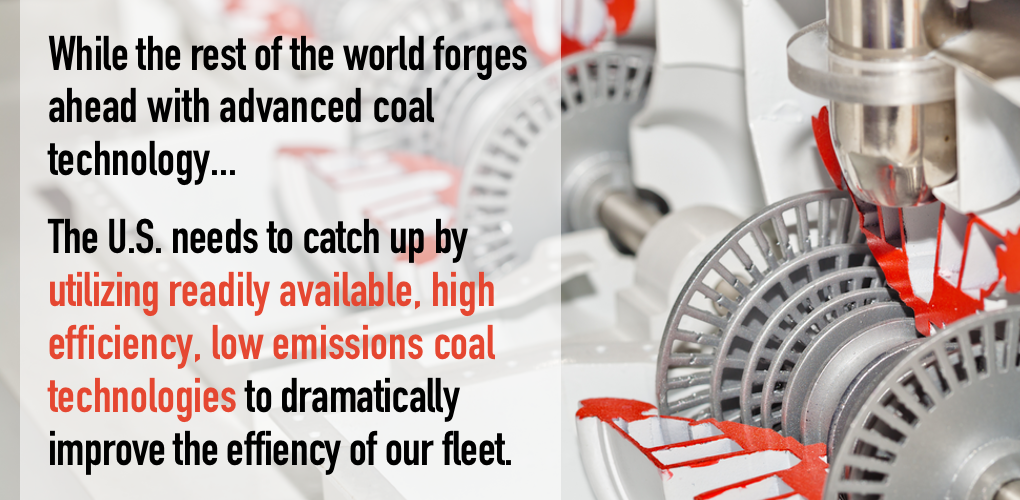
An Alternate Reality
Crafting energy policy is a careful balancing act between driving economic growth, providing energy security and addressing environmental considerations. Across the globe, nations are weighing these considerations and building new, advanced coal plants as centerpieces of their grid. But here at home, from our perch atop the world’s largest coal reserves, we watch innovation as observers rather than leaders.
As The Wall Street Journal recently reported, coal remains the world’s leading source of electricity, the same designation it has held for the last two decades. Both Asian and African nations are leaning on coal to expand access to electricity. Vietnam, for example, is planning a fivefold increase in its coal capacity through 2035. Despite currently generating just 2 percent of its power with coal, Bangladesh is aiming for 50 percent by 2030 as it builds out its grid.
According to the U.S Energy Information Administration, nations in and around the Middle East will add 41 gigawatts (GW) of coal capacity over the next decade. Many of the countries planning new coal capacity currently don’t have any. Egypt, Oman, Iran, Jordan and the United Arab Emirates (UAE) will be adding coal plants to their electric mix for the first time. The reliability, security and balance these plants will bring to each nation’s grid highlight the attractiveness of coal.
The coal plants coming to the UAE and Egypt underscore the coal technology now available if nations, or utilities, choose to pursue it. Dubai’s Hassyan Project, currently under construction, consists of 3.6 GW of ultra-supercritical generating capacity. Egypt is building a 6 GW plant featuring six ultra-supercritical units.
While the world forges ahead with advanced coal technology, the U.S. is being left behind. Readily available, high efficiency, low emissions coal technologies, such as supercritical and ultra-supercritical combustion, could dramatically improve the efficiency of our fleet and in turn help slash emissions. While the U.S. has just one ultra-supercritical coal plant – the gold standard for emissions reduction – China now has more than 90 of them and as new projects in the UAE and Egypt demonstrate, China’s drive towards advanced coal tech is far from solitary.
Improving the efficiency of our current fleet from 33 percent to 40 percent would reduce carbon emissions by 14 to 21 percent. In the same stroke, increasingly efficient plants would mean more competitive power prices, a win for consumers and the competitiveness of U.S. businesses, particularly our most energy-intensive industries.
We should pursue an all-of-the-above energy mix, not just pay it lip service. Doing so means investing in renewable power, new natural gas capacity and infrastructure, and advanced nuclear and coal capacity. A balanced energy mix has always been the strength of our grid and the foundation of its affordability. Preserving it – much less working to shore it up – should be as important as any other policy consideration. We need all our tools to create a reliable, affordable and increasingly clean energy mix of the future. Advanced coal technology is essential to realize that reality.
- On September 5, 2018
